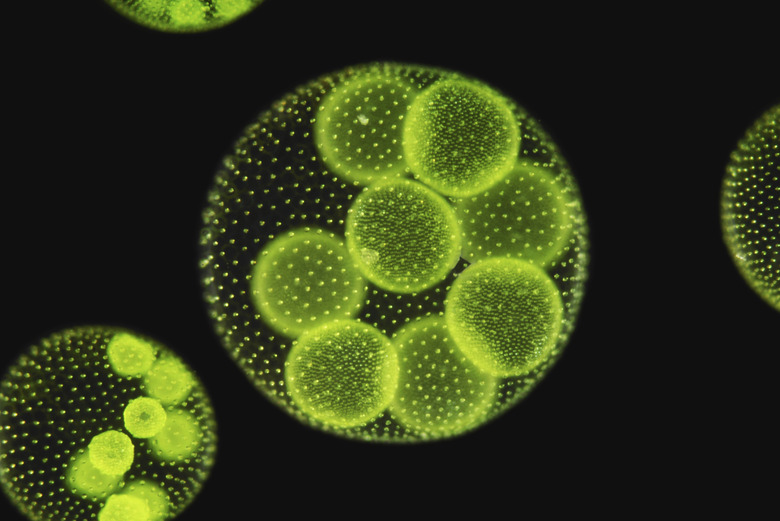What Do Volvox Eat?
Peer through a microscope at a sample of fresh water, and you might see an emerald green, floating sphere. The hollow ball is actually comprised of algae of the genus Volvox and is a colony of thousands of individual algae cells. As part of the colonial lifestyle, the cells work together to find food energy. Cells with eye spots direct the colony toward sunlight, which is then harvested and converted into sugar.
Primary Producers
Primary Producers
Volvox is a photoautotroph, or an organism that produces its own biomass by utilizing light from the sun and inorganic materials such as carbon dioxide and minerals. Volvox algae is green because of its high concentration of chlorophyll, a pigment that absorbs sunlight. Colonies of Volvox consume the sun's energy through the process of photosynthesis and turn it into sugar. The chemical reaction of photosynthesis is carbon dioxide plus water plus sunlight yields sugar, oxygen and water.
References
Cite This Article
MLA
Robbins, Carolyn. "What Do Volvox Eat?" sciencing.com, https://www.sciencing.com/do-volvox-eat-8735995/. 24 April 2017.
APA
Robbins, Carolyn. (2017, April 24). What Do Volvox Eat?. sciencing.com. Retrieved from https://www.sciencing.com/do-volvox-eat-8735995/
Chicago
Robbins, Carolyn. What Do Volvox Eat? last modified March 24, 2022. https://www.sciencing.com/do-volvox-eat-8735995/
